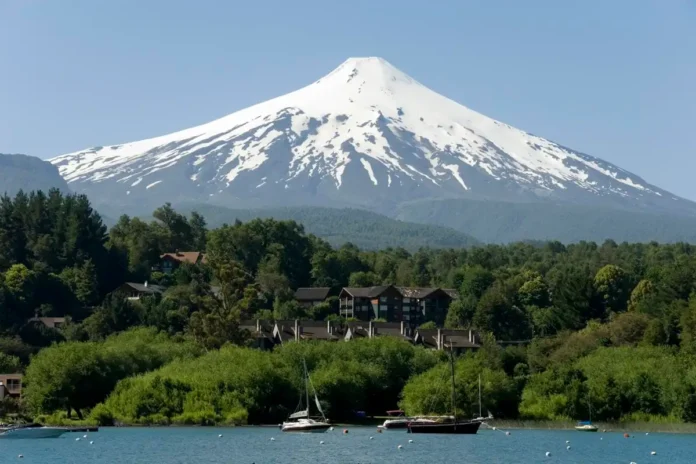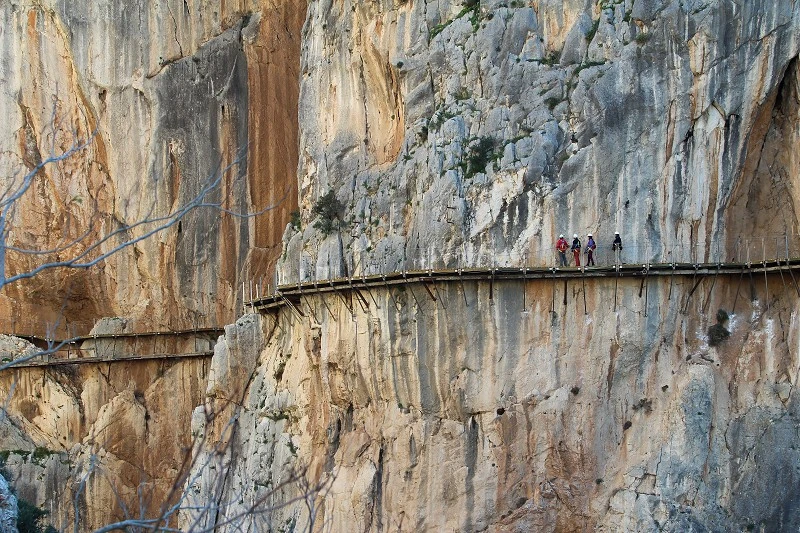Travelling is one of life’s greatest joys, offering opportunities to explore breathtaking landscapes and experience different cultures. However, some destinations push the limits of adventure, blending stunning scenery with a significant element of risk. From narrow cliffs and active volcanoes to precarious hanging bridges, these tourist spots attract thrill-seekers from around the globe. This article will delve into five of the world’s most dangerous tourist destinations, examining what makes them appealing and scary. Join us as we explore the wonders and challenges of these extraordinary locations, ensuring you’re well-informed for your next adventure.
Discover the world’s most dangerous tourist destinations, including Kjeragbolten, Volcano Villarrica, El Caminito Del Rey, Trolltunga, and Hussaini Hanging Bridge. Learn about their risks, how to reach them, and essential safety tips for an unforgettable adventure.
Kjeragbolten – Norway
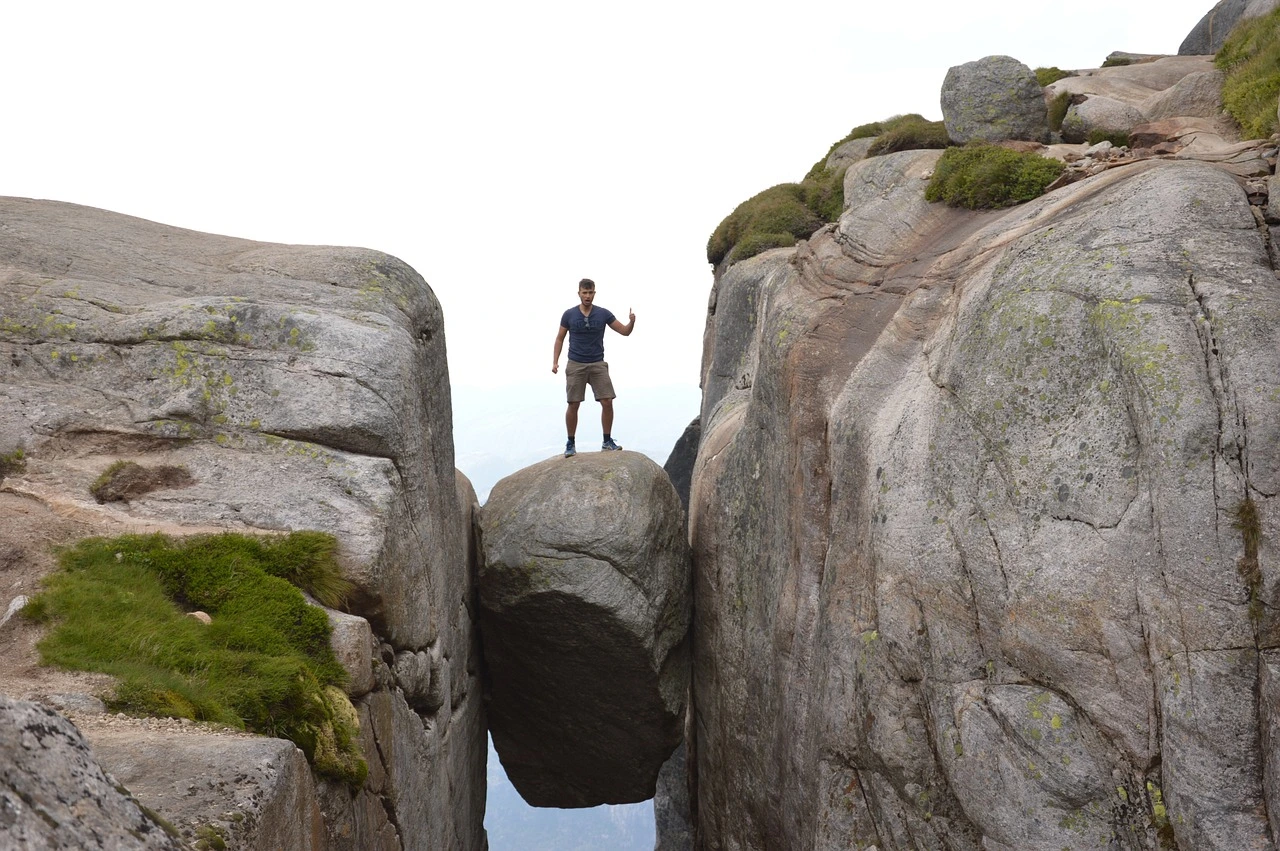
Kjeragbolten is a natural boulder lodged between two cliffs in the Kjerag Mountains. It is 984 meters (3,228 feet) above the Lysefjord, drawing thrill-seeking tourists looking for the perfect photo opportunity. While the views are breathtaking, standing on this boulder involves considerable risk due to the high elevation and exposure to the elements.
How to Reach Kjeragbolten
To reach Kjeragbolten, visitors need to undertake a strenuous 5-6 hour hike (round trip) from Øygardstøl. The trail features steep ascents and descents, requiring physical endurance and proper hiking equipment. The best time to visit is from June to September, as snow and ice make the trail unsafe during winter.
Why It’s Dangerous
The main danger of Kjeragbolten lies in its lack of safety railings—one wrong step could result in a fatal fall into the fjord below. Strong gusts of wind add to the challenge, making maintaining balance on the rock difficult. Additionally, the surfaces can become slippery due to sudden rain or fog, increasing the risk of accidents.
Safety Tips
- Wear proper hiking shoes with excellent traction to prevent slipping.
- Avoid attempting to stand on the boulder during rainy or windy conditions.
- Travel with a group or join a guided tour for safety and support.
- Start the hike early to allow enough time to return before dark.
Volcano Villarrica – Chile
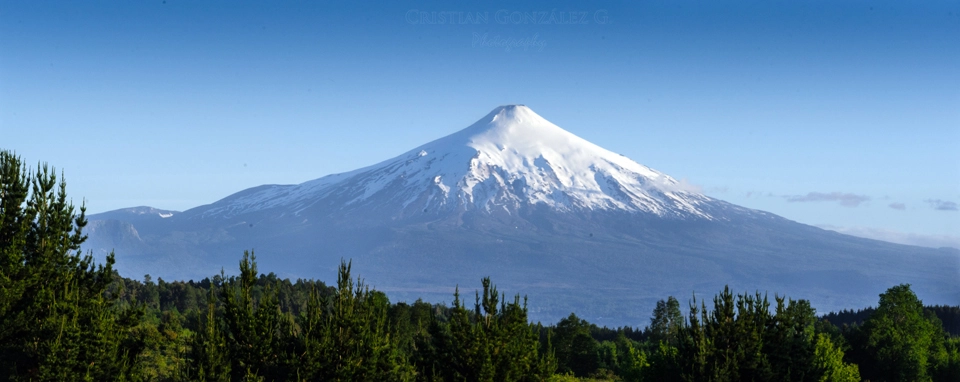 Volcano Villarrica is a majestic stratovolcano that rises 2,847 meters (9,340 feet) above sea level. It is one of Chile’s most iconic landmarks, located near the famous tourist town of Pucón. Known for its snow-capped peak and lava-filled crater, it attracts hikers, skiers, and adventure enthusiasts. However, its beauty hides significant risks, as it remains one of the most active volcanoes in South America.
Volcano Villarrica is a majestic stratovolcano that rises 2,847 meters (9,340 feet) above sea level. It is one of Chile’s most iconic landmarks, located near the famous tourist town of Pucón. Known for its snow-capped peak and lava-filled crater, it attracts hikers, skiers, and adventure enthusiasts. However, its beauty hides significant risks, as it remains one of the most active volcanoes in South America.
How to Reach Volcano Villarrica
Visitors can access the volcano through guided tours from Pucón. Many tour operators offer equipment rentals, including climbing gear and protective masks. The best time for climbing is during the summer months, from November to March when the weather is more stable and snow levels are manageable.
Why It’s Dangerous
The main risk with Villarrica is its unpredictable activity—it frequently erupts, sending lava flows, ash, and gasses into the air. Hikers also face the dangers of avalanches on the snow-covered slopes and exposure to toxic gasses near the crater. Sudden weather changes can make the climb treacherous, with fog and wind reducing visibility and increasing the risk of accidents.
Safety Tips
- Check eruption alerts: Always monitor volcanic activity reports before planning the climb.
- Join a guided tour: Licensed guides know the terrain and safety protocols.
- Wear protective gear: Bring gas masks to avoid inhaling toxic glasses near the summit.
- Be prepared for changing conditions: Wear layered clothing, carry food and water, and bring appropriate equipment to handle sudden weather shifts.
El Caminito Del Rey – Spain
El Caminito Del Rey, or “The King’s Little Pathway,” is a narrow walkway that hugs the cliffs of the El Chorro Gorge in Málaga, Spain. Initially built in the early 20th century for hydroelectric plant workers, the path became infamous for its deteriorated condition, earning the reputation of being the “world’s most dangerous walkway.” Although it has been renovated and reinforced with safety measures, the pathway still offers an adrenaline-pumping experience with breathtaking views for those brave enough to attempt it.
How to Reach El Caminito Del Rey
El Caminito Del Rey is about an hour’s drive from Málaga. Visitors can access the trail through guided tours, often including transportation from nearby towns. The path spans around 8 kilometers (5 miles) and takes approximately 3-4 hours, including rest stops to admire the dramatic landscape.
Why It’s Dangerous
While the walkway is safer than it once was, it still sits 100 meters (328 feet) above the river, with narrow sections requiring steady footing and composure. Visitors who fear heights may find the experience daunting, as parts of the path are transparent, offering a direct view of the drop below. Strong winds can also pose challenges, and any distraction or lack of attention could result in injury.
Safety Tips
- Wear secure shoes: Opt for comfortable hiking shoes with good grip to prevent slipping.
- Avoid loose items: Secure belongings to prevent them from falling off the path.
- Follow safety instructions: Stick to the marked trail and obey all signs and guidelines from officials.
- Avoid peak hours: Crowds can increase risks, so visit during off-peak hours for a safer and more enjoyable experience.
Trolltunga – Norway
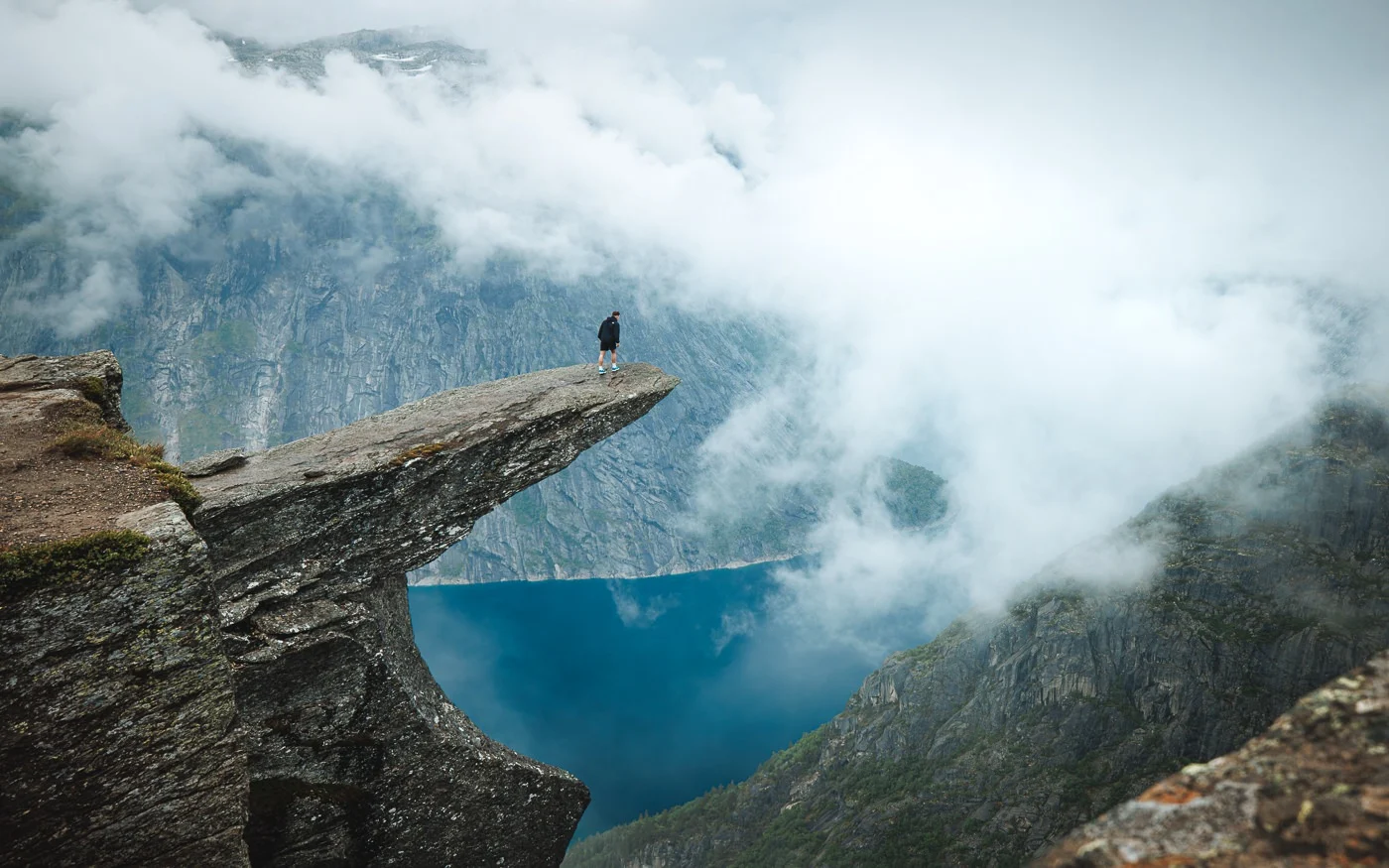 Trolltunga, or the “Troll’s Tongue,” is a breathtaking horizontal cliff that extends 700 meters (2,300 feet) above Lake Ringedalsvatnet. It is one of Norway’s most famous scenic spots, attracting hikers and photographers seeking spectacular views of the surrounding fjords and mountains. The unique formation offers an incredible, once-in-a-lifetime photo opportunity, but the journey there is long and challenging.
Trolltunga, or the “Troll’s Tongue,” is a breathtaking horizontal cliff that extends 700 meters (2,300 feet) above Lake Ringedalsvatnet. It is one of Norway’s most famous scenic spots, attracting hikers and photographers seeking spectacular views of the surrounding fjords and mountains. The unique formation offers an incredible, once-in-a-lifetime photo opportunity, but the journey there is long and challenging.
How to Reach Trolltunga
Trolltunga is located near the town of Odda in Norway. Reaching it requires a physically demanding hike of 28 kilometers (17 miles) round trip, which takes 10-12 hours to complete. The trail is only open from mid-June to mid-September when weather conditions are suitable for hiking. In winter, snow and ice make the path too dangerous to attempt without special equipment and a guide.
Why It’s Dangerous
The length and difficulty of the hike pose significant risks, especially for inexperienced hikers. Sudden weather changes are common in the mountains, with fog, rain, or cold temperatures making the trail slippery and challenging to navigate. Additionally, the cliff edge has no railings or barriers, exposing visitors to the danger of falling if they lose their balance while posing for photos or venturing too close to the edge.
Safety Tips
- Start early: Begin the hike in the morning to ensure you have enough time to return before dark.
- Bring proper gear: Pack rain gear, warm clothing, and enough food and water for the journey.
- Follow marked trails: Stay on the designated paths to avoid getting lost or straying into dangerous areas.
- Avoid risky photos: Exercise caution and avoid standing too close to the edge for the perfect picture.
Hussaini Hanging Bridge – Pakistan
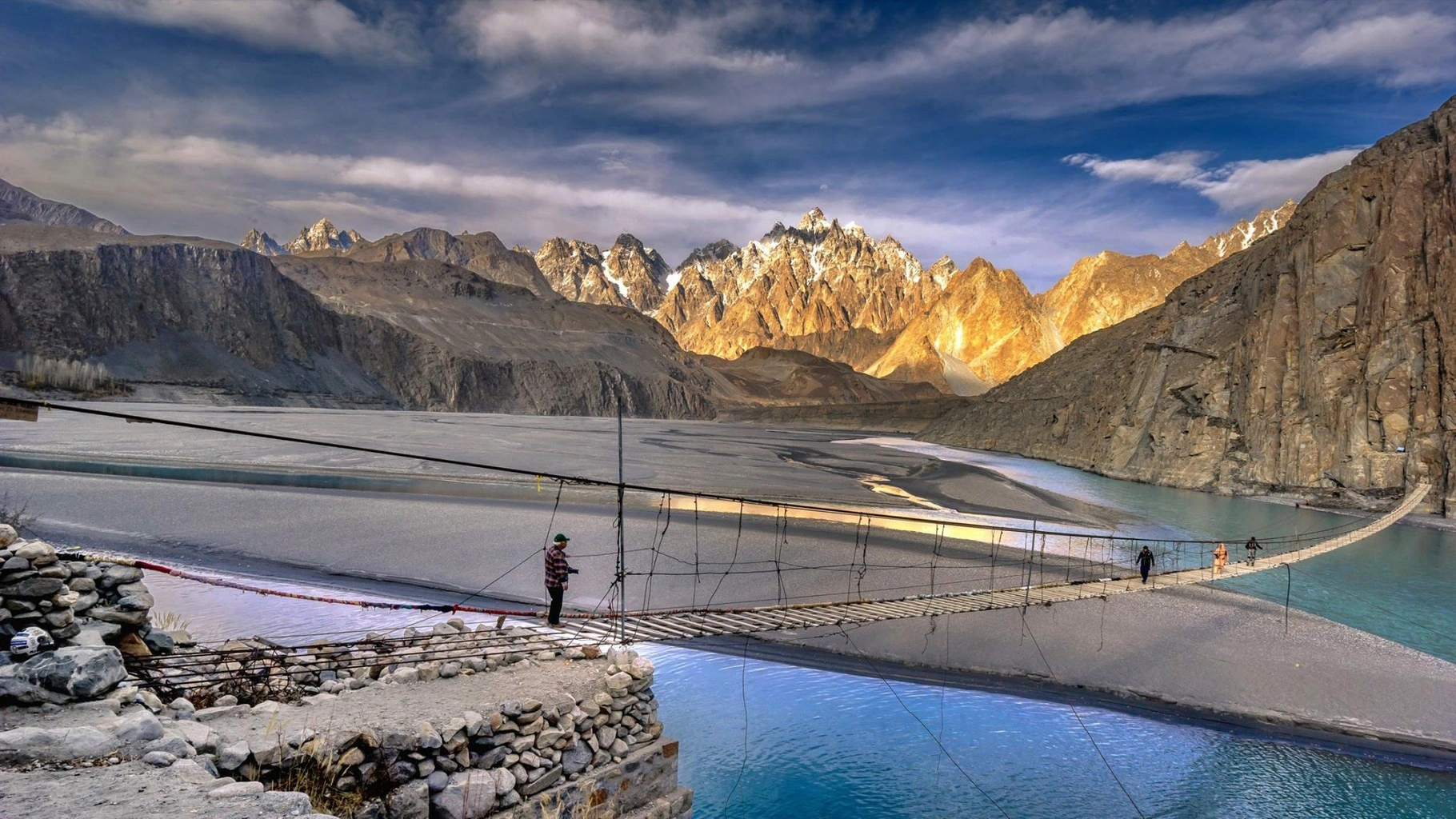 The Hussaini Hanging Bridge, located in the picturesque Hunza Valley in Gilgit-Baltistan, Pakistan, is often considered one of the most dangerous bridges in the world. Spanning the Hunza River, the bridge is notorious for its old, shaky planks with significant gaps between them. It offers a thrilling experience for adventurous travelers, but crossing it requires extreme caution and steady nerves. Despite its challenges, the bridge provides stunning views of the surrounding mountains, making it a popular tourist attraction.
The Hussaini Hanging Bridge, located in the picturesque Hunza Valley in Gilgit-Baltistan, Pakistan, is often considered one of the most dangerous bridges in the world. Spanning the Hunza River, the bridge is notorious for its old, shaky planks with significant gaps between them. It offers a thrilling experience for adventurous travelers, but crossing it requires extreme caution and steady nerves. Despite its challenges, the bridge provides stunning views of the surrounding mountains, making it a popular tourist attraction.
How to Reach Hussaini Hanging Bridge
The nearest town to the Hussaini Hanging Bridge is Gulmit, accessible by road from Karimabad, the heart of the Hunza Valley. Visitors can travel to the site by car or local transport. While the bridge is open year-round, the summer months (June to August) are the best time to visit, as weather conditions are more favorable for travel and the river flow is less dangerous.
Why It’s Dangerous
The bridge is notoriously unstable, with missing planks and wide gaps that make crossing difficult and risky. Its loose ropes and wooden planks sway with every step, and high winds in the valley can further destabilize the structure, adding to the difficulty of crossing. Safety measures make it challenging even for those with good balance, requiring patience and focus to reach the other side without mishap.
Safety Tips
- Hold the side ropes: Keep a firm grip on the ropes for stability while crossing.
- Avoid lousy weather: Do not attempt to cross during windy or rainy conditions, as the bridge becomes even more unstable.
- Travel light: Carry only essential items to maintain balance on the narrow planks.
- Move steadily: Avoid sudden or jerky movements that could destabilize the bridge and increase the risk of falling.
Conclusion
Traveling to the world’s most dangerous tourist destinations offers unique experiences that can be both exhilarating and risky. From the heights of Kjeragbolten and Trolltunga in Norway to the treacherous Hussaini Hanging Bridge in Pakistan, each location presents its challenges and breathtaking views. While the allure of adventure is undeniable, travelers must prioritize safety and adequately prepare for the risks involved. Visitors can enjoy these remarkable sites by following safety tips, traveling with experienced guides, and staying aware of changing conditions while minimizing the dangers. Ultimately, these dangerous destinations remind us that nature’s beauty often comes with a price, and respecting the elements can lead to unforgettable adventures.


